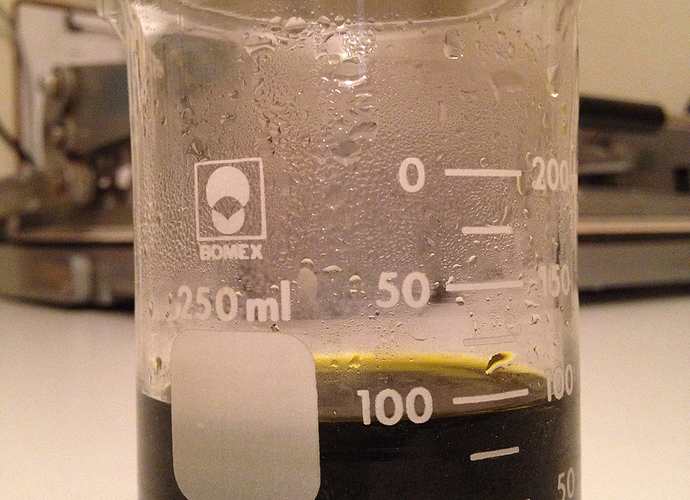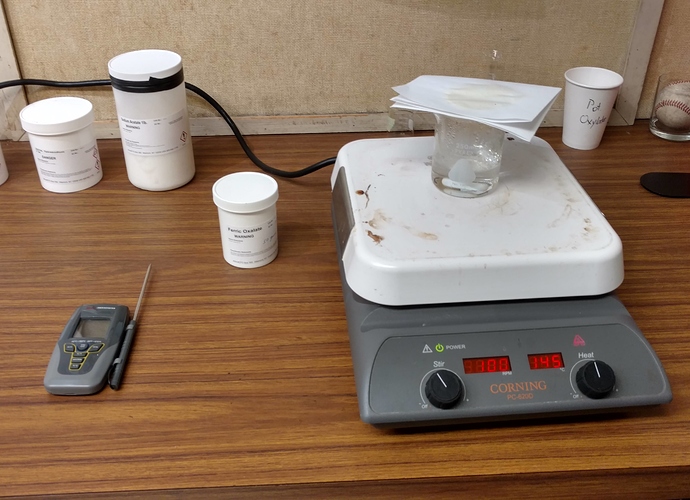I have an LED lightbox (viewing, not exposure) in my darkroom, but haven’t tested it for UV. It looks similar to the one in your link. I don’t have it on when coating though, because it is right next to the coating table. I’m still old-school with incandescents for ambient light in there. I know that will have to change at some point. There are UV filter sleeves for fluorescents - probably something similar for LEDs if necessary.
When the much anticipated new batch of Platine first arrived at B&S in January of 2016, I went down there to test it in their darkroom before buying several packages of uncut sheets. First thing I noticed when I walked into the darkroom was the fluorescent ceiling lights. I asked Dana what he used for working lights and he said that’s them. I asked if he ever had problems with fog, he said nope. So I got to work. First print (21-step Stouffer) badly fogged. I showed Dana, he shrugged. I found a clamp light with an incandescent bulb, and turned off the overhead fluorescents. Second print was fine. I showed Dana, and asked how what concentration Na2 he normally used for an 8x10 print. I don’t remember for certain, but he said it was either 5 or 10%. I told him I use 1.25%. In effect, he is using stronger Na2 to overcome the fog. I wonder how many others are doing that without realizing it. I don’t know if he has changed his practice.
I’m aware of the various additives, usually oxalic acid and/or edta, that some folks use when mixing ferric oxalate such as mentioned by DMK. I used to use them too. I had heard all of the claims about increased speed and Dmax, and just took it for granted that they were true since they came from people whose work I admired. At some point, I don’t remember exactly when, but it was either before I first moved to Taos in late 2004, or soon after I finally got settled in 2008, I did some comparative tests of my own and guess what … there was no significant and repeatable difference between plain ferric oxalate, ferric oxalate with oxalic acid, ferric oxalate with edta, or ferric oxalate with both oxalic acid and edta. Repeatable is the key word here. One round of tests might appear to suggest that one formulation is faster and/or darker than the others, but another round of tests come out a bit different, and after a couple more rounds and averaging the results, there was no discernible difference. Oh well. Other’s tests may differ, and if someone thinks their special formula is better than the others, that’s fine with me.
The temperature thing is another matter, as you have discovered, Jon. Something has changed in the ferric oxalate powder that B&S are making and selling. I don’t think they know what it is either. When I got started with Pt/Pd in the early '90s, FO powder went into solution fairly easily (within a couple of hours) when mixed with distilled water at 120°F. Sometime after they moved from LA to Fanta Se that changed, but I don’t remember exactly when. I had no darkroom and did no Pt/Pd printing from 2005-2008, and when I got started again in '08 I noticed that I sometimes had trouble getting the FO to dissolve completely. I tried heating the water up to 150 or so, which helped a bit sometimes. When I finally called B&S about it, Dana said to heat the water up to 180. Since it doesn’t stay there long once you take it off the hotplate, I have been heating to boil then letting it cool slightly before adding the FO powder. That seems to do the trick here. I had an accident mixing palladium solution once when I left a graduated cylinder in a water bath on the hotplate and forgot to turn the heat off. After the water evaporated the cylinder broke off of the base and I ended up with a palladium plated stainless steel beaker. Since then I don’t leave anything on the heat without my full attention.
As for premixing FO and Pd, I don’t recommend it. I tried that once, also a long time ago when i was printing 10x24 and 8x30 triptychs, and found that over the course of a day of printing, contrast decreased and fog began to appear. I also tried coating 6 sheets at the beginning of the session, but I due to limited sink space I could only expose and process one print per hour. Later prints were softer than earlier ones, and fog began to appear at the end of the session. On the other hand, if you are working small and want to be sure your mix is consistent, and can manage several prints at different stages of exposure and processing, making enough to use for several prints in an hour or so is quite sensible and not a problem at all. When I test papers with the 4x5 Stouffer 21-step, I always mix as if I’m printing 8x10 which usually is enough for 4 4x5s.
I’ve got something else to discuss with you about ferric oxalate, and one or 2 other things, but I think I’ll email or message you about that tomorrow.
Cheers




